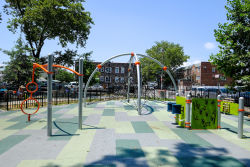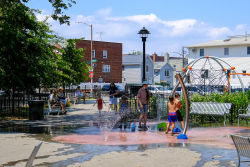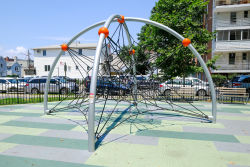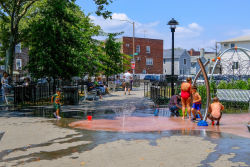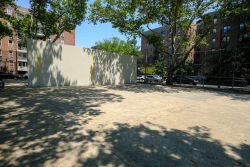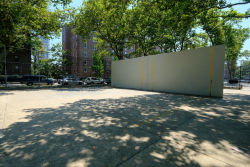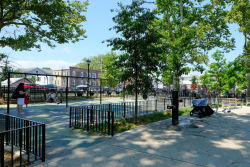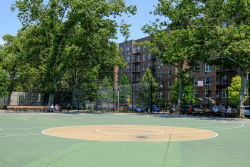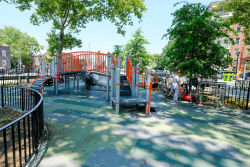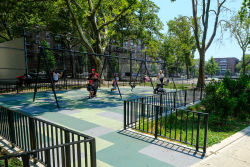Homecrest Playground
Homecrest Playground
This playground is named for the surrounding neighborhood, a 20th century extension of the town of Gravesend. Gravesend derives its name from either Dutch or English colonists; the Dutch words Grafes and Ande, meaning “end of the grove,” could refer to the eastern location of Gravesend, but the name also might reflect the wishes of English settlement founder Lady Deborah Moody (c.1583-1659). Gravesend was the name of a city near her former home in England at the mouth of the Thames River.
Lady Deborah Moody was a wealthy widow when she left England for America in 1639. Initially arriving in Massachusetts, she was coldly received by the Puritans due to her adherence to Anabaptism. According to the religion’s basic tenets, followers could not hold government office, bear arms, or perform childhood baptisms. Moody and her fellows were expelled from Massachusetts in 1643 and traveled to New Netherland in 1645 in search of a place to settle.
Governor Willem Kieft (1597-1647) was at that time offering land grants to those who would settle in the areas around Manhattan. Kieft was in the middle of a war with the surrounding Native Americans, and he reckoned that expanding the colony would provide Manhattan with a buffer, warning the center of New Netherland when its outposts were under attack. Moody accepted Kieft’s offer, and she and her Anabaptists established Gravesend on the south shore of Long Island, just north of Coney Island, thereby starting the first English settlement in what is now Brooklyn.
The Anabaptists quickly abandoned Gravesend in the face of Canarsie raiders, but the religious sect returned with the advent of peace in 1645, bearing the first town charter written in English in the colonies. Moody’s plan for Gravesend was innovative and based on Anabaptist beliefs. Designed to create open and equal spaces for the town’s inhabitants; the resulting grid layout was the first of its kind.
Lady Moody died in 1659, and the town remained largely rural for over two centuries until it was incorporated into the City of Brooklyn in 1894. The rail lines that followed spelled the end of Gravesend’s more bucolic years. Developers built many large single-family homes in the east end of Gravesend and agreed to change the neighborhood’s name to Homecrest-by-the-Sea. Its boundaries are Kings Highway to the north, Avenue V to the south, East 16th Street to the east, and Ocean Parkway to the west.
This playground is part of Shore Parkway, an 816.1-acre collection of parks that stretches across Brooklyn and Queens. The City acquired the parcels of land that make up Shore Parkway between 1927 and 1939 by condemnation. Parks was assigned the property in 1939, and the parkway opened the following year.
In 1942, Homecrest Playground opened with a baseball field, basketball courts, handball courts, and benches for community use. London plane trees (Platanus x acerifolia) encircle this park, creating welcoming shade. Today, this site still provides ample opportunity for recreation and rest. City Council Member Anthony D. Weiner sponsored a $555,000 reconstruction in 1993, funding the removal of the old wading pool and public restroom, refurbishment of the handball courts, construction of a spray area with whale sculptures, and the installation of new play equipment, swings, benches, and a chain link fence.
Check out your park's Vital Signs
Clean & Safe
Green & Resilient
Empowered & Engaged Users
Share your feedback or learn more about how this park is part of a
Vital Park System

